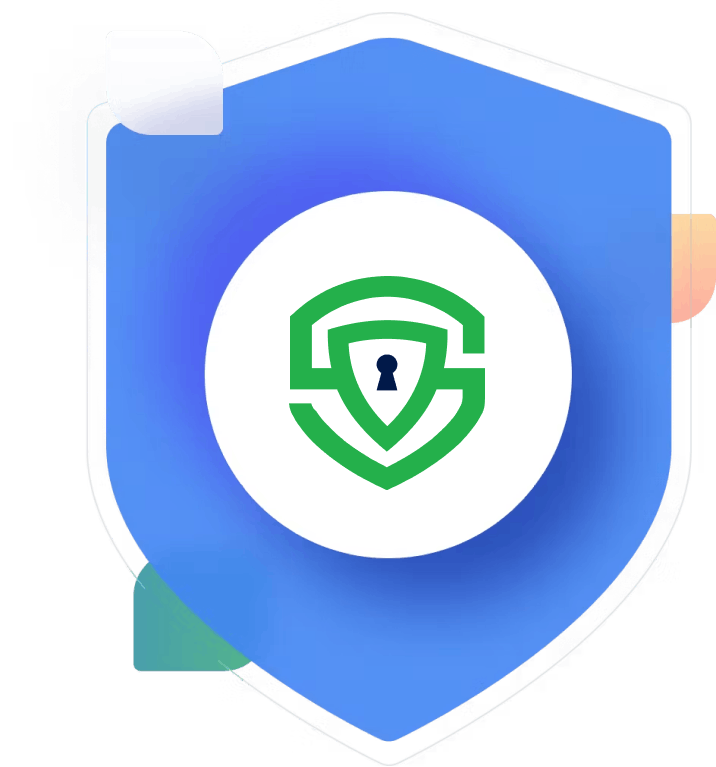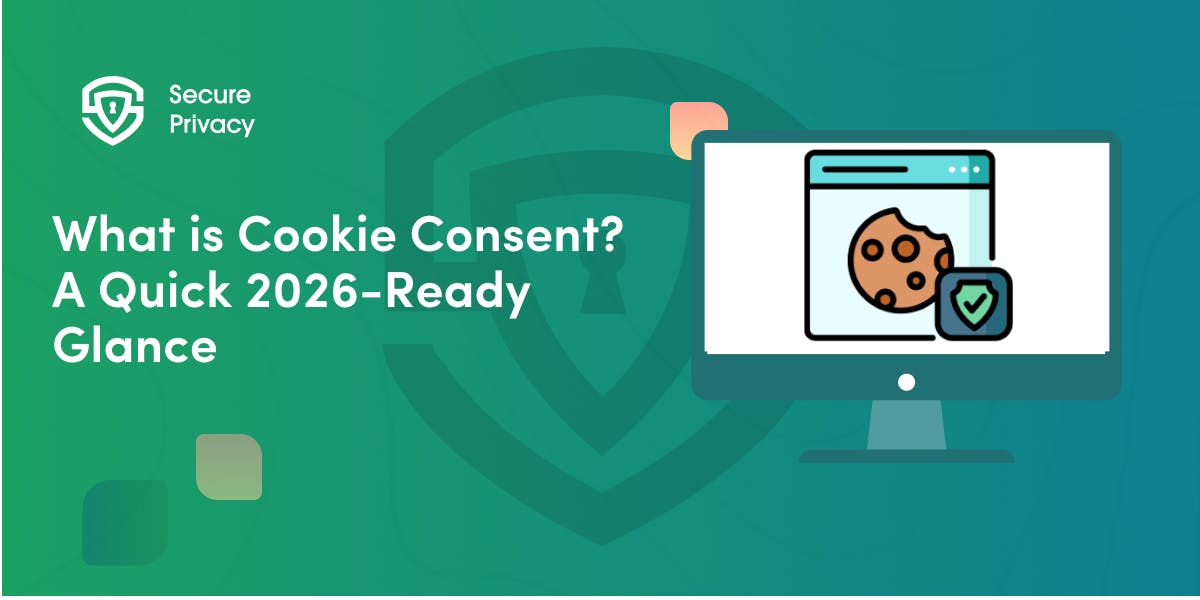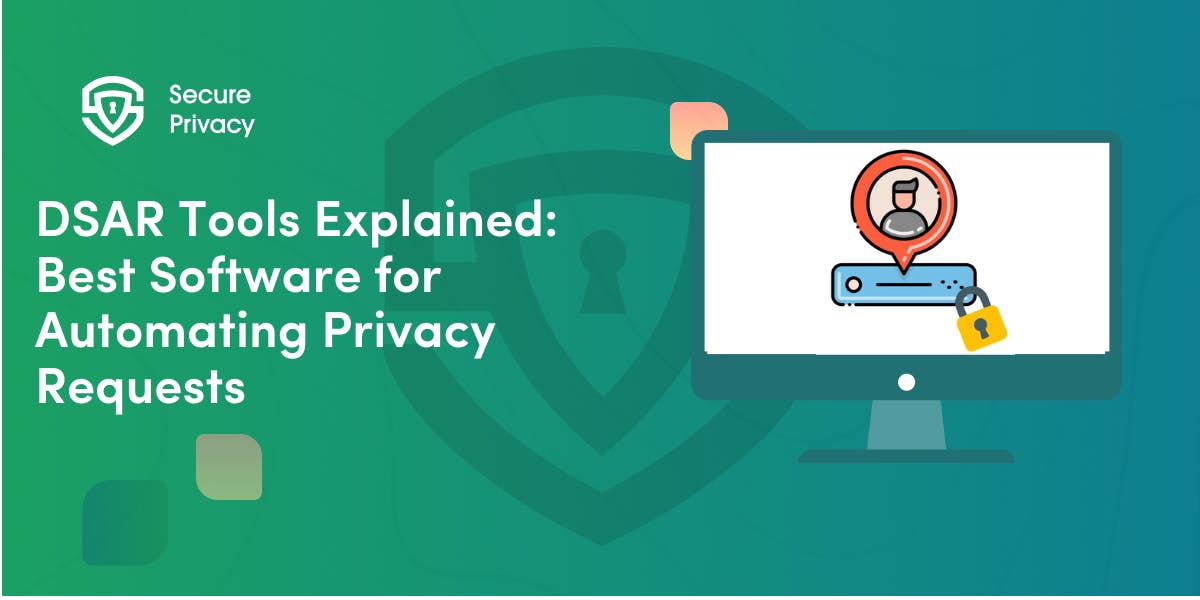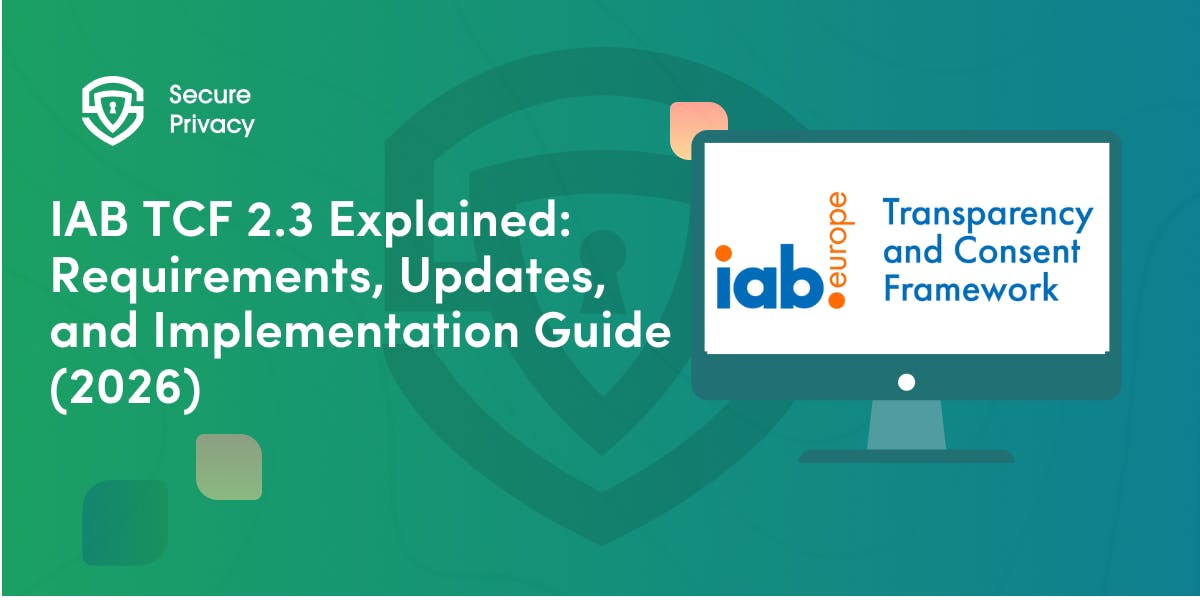Privacy Governance Software for DPOs: Features, Use Cases & Vendor Guide
Your spreadsheets are breaking under GDPR Article 30 requirements, data subject requests pile up faster than processing, and board members demand privacy metrics you can't produce. If managing privacy compliance feels like regulatory whack-a-mole, you're experiencing why privacy governance software for DPOs has become essential infrastructure.
Modern Data Protection Officers manage complex ecosystems of data flows, vendor relationships, and regulatory requirements that manual processes cannot handle at scale. The average enterprise receives 51-100 DSARs per month with a per-request cost exceeding $1,500 when handled manually.
In this guide, you'll discover how privacy governance software transforms DPO operations from reactive compliance management to proactive risk orchestration, enabling you to demonstrate accountability while freeing your team to focus on strategic privacy initiatives.

Prioritizing user privacy is essential. Secure Privacy's free Privacy by Design Checklist helps you integrate privacy considerations into your development and data management processes.
Understanding Privacy Governance Software
What Defines Privacy Governance Software
Privacy governance software for DPOs encompasses integrated platforms that automate, centralize, and streamline privacy program management across the data protection lifecycle. Unlike basic cookie consent tools or generic GRC platforms, these solutions address the unique operational challenges that DPOs face daily.
These platforms consolidate Records of Processing Activities (RoPA), Data Protection Impact Assessments (DPIAs), Data Subject Access Requests (DSARs), vendor risk assessments, and compliance reporting into unified workflows. The integration eliminates data silos while providing audit trails that regulators expect.
GDPR governance tool capabilities extend beyond simple compliance tracking to include predictive risk assessment, automated evidence collection, and workflow orchestration. Modern platforms incorporate artificial intelligence to draft privacy notices, analyze vendor contracts, and recommend control implementations.
Core Capabilities vs Traditional Tools
Traditional privacy management relies on spreadsheets, email threads, and manual document libraries that create dangerous gaps in accountability and audit readiness. DPO compliance software provides structured, auditable processes with automated evidence collection.
Generic Governance, Risk, and Compliance (GRC) platforms often treat privacy as an afterthought, lacking specialized workflows and regulatory mappings that privacy professionals require. Purpose-built privacy governance software includes pre-configured templates, jurisdiction-specific compliance modules, and privacy-specific risk scoring.
The scalability difference becomes critical as organizations grow. Manual processes that work for small teams become impossible across multiple business units, geographic regions, or client portfolios without specialized automation and workflow management.
DPO-Specific Challenges and Solutions
Records of Processing Activities Management
Article 30 register software automates the creation and maintenance of processing records required under GDPR Article 30 and similar regulations. These systems automatically populate entries based on data discovery results, system integrations, and documented activities.
Modern RoPA management includes automated data flow mapping, legal basis tracking, and retention schedule management. The systems maintain live inventories that update automatically as activities are identified or change.
Advanced capabilities include multi-jurisdiction support, template libraries, and integration with legal databases for accurate regulatory mapping. Organizations can generate regulator-ready reports and maintain audit documentation without manual compilation.
Data Protection Impact Assessment Workflows
DPIA workflow management guides users through legal and technical assessments while storing evidence and assigning remediation tasks. Integrated DPIA engines provide jurisdiction-specific templates, risk scoring algorithms, and automated report generation.
Workflow automation includes threshold screening, stakeholder notifications, approval routing, and mitigation tracking. The systems ensure DPIA requirements are triggered appropriately while maintaining detailed audit trails of assessment decisions.
Modern DPIA platforms support collaborative assessments across multiple departments, automated control recommendations based on processing types, and integration with broader risk management frameworks. This ensures consistent, defensible impact assessments.
Data Subject Rights Automation
End-to-end DSAR automation handles request intake, identity verification, data discovery, response compilation, and delivery through secure portals. Advanced systems provide bulk request processing, intelligent redaction, and automated response generation across multiple regulatory frameworks.
Privacy program management includes performance analytics that identify trends in request patterns and potential compliance risks. Organizations can proactively adjust resources based on predictive analytics rather than reactive management.
Integration capabilities allow DSAR systems to connect with business applications, automatically retrieving personal data and updating records based on request outcomes. This eliminates manual data gathering while ensuring comprehensive fulfillment.
Vendor and Third-Party Risk Management
Automated vendor risk assessment includes questionnaire distribution, response analysis, risk scoring, and Data Processing Agreement tracking. The systems maintain inventories of processors with automated risk alerts.
GDPR governance tool platforms provide vendor-specific risk dashboards, automated contract analysis, and breach notification workflows. Organizations can track vendor compliance status while maintaining evidence for regulatory accountability.
Advanced vendor management includes AI-powered contract analysis, automated risk scoring based on processing types and jurisdictions, and integration with procurement systems. This ensures vendor relationships align with privacy requirements.
Essential Features for Effective DPO Operations
Real-Time Compliance Monitoring
DPO compliance software must provide real-time visibility into compliance status across multiple regulatory frameworks including GDPR, CCPA/CPRA, HIPAA, and emerging state privacy laws. The systems track compliance indicators including policy adherence, deadline management, and regulatory requirement fulfillment.
Automated alert systems notify stakeholders of approaching deadlines, policy violations, and emerging privacy risks. These systems detect anomalous data access patterns, unauthorized data transfers, and potential compliance gaps before they escalate into regulatory violations.
Executive-level compliance scorecards provide board-ready summaries while enabling drill-down capabilities for operational teams. Color-coded status indicators and trend analysis help stakeholders quickly understand current compliance posture and emerging risks.
Role-Based Task Management
Modern privacy governance requires collaboration across legal, IT, marketing, and business teams with different responsibilities and access requirements. Automated privacy workflows include role-based task assignment, approval routing, and progress tracking that ensures accountability while maintaining access controls.
Task management capabilities include automated escalation procedures, deadline monitoring, and notification systems. Teams can collaborate effectively while maintaining clear documentation of decisions for regulatory purposes.
Integration with existing business systems enables task creation from policy changes, system deployments, or risk assessments. This ensures privacy considerations are embedded throughout organizational operations rather than treated as separate compliance activities.
Multi-Entity and Jurisdictional Support
Enterprise organizations require privacy program management capabilities that support complex corporate structures including subsidiaries, franchises, joint ventures, and international operations. Multi-entity dashboards provide consolidated views while maintaining entity-specific compliance tracking.
Cross-border data transfer monitoring ensures compliance with adequacy decisions, standard contractual clauses, and binding corporate rules. The systems track data flows, assess transfer mechanisms, and monitor regulatory changes affecting international operations.
Jurisdiction-specific compliance modules adapt platform functionality to local requirements while maintaining centralized oversight. Organizations can manage global privacy programs while addressing regional regulatory variations.
Use Cases and Implementation Scenarios
Mid-Size SaaS Company Operations
A growing SaaS company serving EU and US clients needs privacy governance software for DPOs that handles multi-jurisdictional compliance without overwhelming small teams. The solution must automate GDPR Article 30 requirements while supporting CCPA consumer rights.
Key requirements include automated RoPA generation from system integrations, streamlined DSAR processing, and vendor risk assessment workflows. The platform should integrate with existing CRM, HR, and development tools while providing audit-ready documentation.
Success metrics include reduced time-to-compliance for new features, automated quarterly board reporting, and streamlined audit preparation. The solution should scale with business growth without requiring additional staff.
Multinational Corporation Management
Large enterprises with multiple subsidiaries require entity-specific RoPAs, localized compliance tracking, and consolidated risk reporting. DPO compliance software must support complex organizational structures while maintaining centralized oversight.
Advanced requirements include cross-border data transfer monitoring, subsidiary-specific access controls, and automated consolidation of compliance metrics across entities. The platform should support different legal bases and regulatory requirements across jurisdictions.
Implementation considerations include data residency requirements, integration with existing enterprise systems, and support for multiple languages and regulatory frameworks. Success depends on balancing central governance with operational autonomy.
Education Provider Compliance
Educational institutions managing FERPA and GDPR requirements need specialized automated privacy workflows that address unique regulatory combinations and stakeholder groups. The solution must handle student data protection alongside employee and research data compliance.
Specific capabilities include education-sector templates, research data protection workflows, and integration with student information systems. The platform should support consent management for minors and complex data sharing arrangements with educational partners.
Key metrics include streamlined student data request processing, automated compliance reporting for multiple agencies, and reduced administrative burden on IT and legal teams.
Marketing Agency Client Management
Agencies processing data on behalf of multiple clients require privacy program management platforms that support white-label operations and client-specific compliance requirements. The solution must maintain data isolation while providing efficient resource management.
Essential features include client-specific dashboards, automated compliance reporting for each client, and centralized management of processor agreements. The platform should support different regulatory requirements across client portfolios.
Success factors include scalable client onboarding, automated compliance reporting, and demonstration of processor accountability to client organizations.
Vendor Evaluation and Selection Strategy
Integration and Technical Capabilities
Evaluate native connectors for HRIS, CRM, cloud storage, and directory services when selecting GDPR governance tool platforms. Consider the depth of API coverage and automated data synchronization capabilities rather than just connection count.
Assessment should include performance testing for data discovery and DSAR processing across large data stores. Platforms handling petabyte-scale environments require optimization for machine learning acceleration and distributed processing.
Technical architecture considerations include deployment models, data residency options, security certifications, and integration with existing enterprise security infrastructure. Ensure the platform meets organizational requirements for privacy and security.
User Experience and Adoption
Prioritize platforms that reduce manual work rather than simply adding dashboard layers to existing processes. DPO compliance software should eliminate administrative overhead while improving compliance outcomes and audit readiness.
Evaluate training requirements, user interface complexity, and time-to-value for different stakeholder groups. Consider platforms that provide role-specific interfaces optimized for executives, privacy professionals, and operational teams.
Change management considerations include implementation support, ongoing training resources, and user community access. Successful deployments depend on user adoption across multiple organizational levels and functional areas.
Total Cost of Ownership Analysis
Factor licensing tiers, implementation services, ongoing support costs, and potential consulting requirements when evaluating privacy program management platforms. Consider modular pricing structures and scalability costs as organizational needs grow.
Quantify potential cost savings from automated processes, reduced manual effort, and improved compliance efficiency. Calculate ROI based on DSAR processing time reduction, audit preparation efficiency, and regulatory risk mitigation.
Long-term considerations include vendor roadmap alignment, data portability, and exit mechanisms. Ensure contractual rights to export data in open formats to protect long-term evidence continuity and organizational flexibility.
Future Trends and Strategic Considerations
Artificial Intelligence Integration
Automated privacy workflows increasingly incorporate generative AI for policy drafting, regulatory analysis, and compliance recommendations. AI-powered assistants can answer regulatory questions, generate DPIA sections, and recommend control implementations based on processing activities.
Machine learning capabilities include predictive risk scoring, anomaly detection, and automated classification of personal data. These technologies enable proactive privacy management rather than reactive compliance approaches.
Future developments include AI governance convergence, where privacy platforms embed AI-specific risk assessments aligned with emerging regulations like the EU AI Act. This integration addresses growing AI compliance requirements through existing privacy management infrastructure.
Regulatory Evolution and Compliance Automation
Cross-regulation orchestration tools normalize overlapping global privacy laws into unified control sets, reducing complexity for multinational organizations. Privacy governance software for DPOs must adapt to evolving regulatory landscapes while maintaining operational consistency.
Automated regulatory monitoring includes jurisdiction-specific requirement tracking, impact assessment for regulatory changes, and automated policy updates based on legal developments. This comprehensive approach ensures ongoing compliance without manual legal analysis.
Future platforms will provide composable privacy architectures allowing organizations to assemble specialized capabilities rather than adopt monolithic solutions. API-first approaches enable integration with best-of-breed tools while maintaining unified governance oversight.
Ready to transform your privacy program from spreadsheet chaos to automated governance?
Secure Privacy's privacy governance software for DPOs provides comprehensive automation, intelligent workflows, and seamless integration capabilities that enable effective privacy program management at scale. Experience purpose-built DPO tools that eliminate administrative overhead while strengthening compliance outcomes.
Frequently Asked Questions
What features should DPOs prioritize when selecting privacy governance software?
Privacy governance software for DPOs should prioritize automated RoPA management, integrated DPIA workflows, comprehensive DSAR automation, vendor risk assessment, and real-time compliance monitoring. The platform should eliminate manual processes while providing audit-ready documentation and regulatory reporting capabilities.
How does privacy governance software differ from general GRC platforms?
DPO compliance software provides specialized workflows, regulatory mappings, and privacy-specific risk scoring that generic GRC platforms lack. Purpose-built solutions include pre-configured templates, jurisdiction-specific modules, and privacy-focused automation that addresses unique DPO operational requirements.
What ROI can organizations expect from privacy governance software implementation?
GDPR governance tool implementations typically reduce DSAR processing costs from $1,500 to under $200 per request through automation. Organizations report 60-80% time savings in compliance reporting, 75% reduction in operational effort, and significant risk mitigation benefits from proactive compliance management.
How do privacy governance platforms support multi-jurisdictional compliance?
Privacy program management platforms provide jurisdiction-specific compliance modules, automated regulatory mapping, cross-border data transfer monitoring, and localized reporting capabilities. The systems adapt to regional requirements while maintaining centralized oversight for global privacy programs.
What integration capabilities should privacy governance software provide?
Automated privacy workflows should integrate with CRM systems, HRIS platforms, cloud infrastructure, marketing automation tools, and security systems through robust APIs. Real-time data synchronization, automated workflow triggers, and bi-directional data exchange ensure comprehensive privacy program visibility.
How do small organizations benefit from enterprise privacy governance software?
Even small organizations processing personal data regularly trigger RoPA and DPIA requirements under Article 30 register software obligations. Lightweight solutions provide structured compliance processes, automated evidence collection, and audit readiness that manual approaches cannot achieve efficiently or defensibly.
Get Started For Free with the
#1 Cookie Consent Platform.
No credit card required

What is Cookie Consent? A Quick 2026-Ready Glance
Your website loads. Cookies track users. But without proper cookie consent, you're violating GDPR — risking fines up to €20 million or 4% of global revenue. Cookie consent is the legally required mechanism by which websites obtain explicit user approval before deploying non-essential tracking technologies. This requirement stems from GDPR Article 4(11) and the ePrivacy Directive, mandating that consent must be freely given, specific, informed, and unambiguous.
- Legal & News

DSAR Tools Explained: Best Software for Automating Privacy Requests
You're drowning in data subject access requests. Manual searches through dozens of systems miss regulatory deadlines and expose organizations to fines starting at $2,500 per violation. The solution? DSAR tools — purpose-built software that automates the entire process of responding to data subject access requests, from intake to delivery.
- Legal & News

IAB TCF 2.3 Explained: Requirements, Updates, and Implementation Guide (2026)
Your ad revenue dropped 40% overnight. Google stopped bidding on your inventory. Your DSP partners flagged your traffic as non-compliant. The culprit? An outdated TCF 2.2 consent string after the February 2026 enforcement deadline.
- Legal & News
- Cookie Consent
